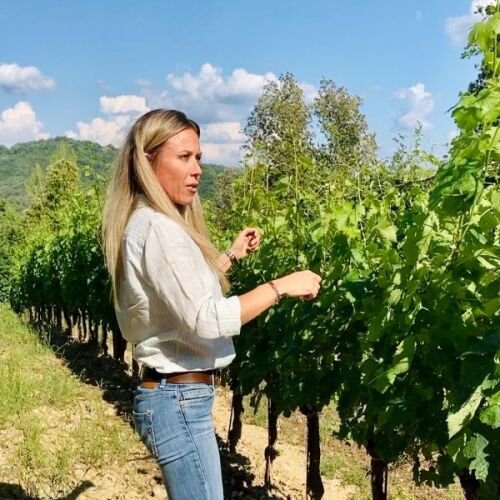When it comes to Tuscan culinary wine regions, you’ve definitely heard of Chianti Classico, but what do you know about Bolgheri? Or how about Suvereto? Before we get to Suvereto, you let’s chat Bolgheri.
These region for long has been considered on the cutting edge for Tuscan wine making. It is home to famed Super Tuscans and one of Italy’s fastest growing wine destinations. Read on to find out more.
Bolgheri wine region
Bolgheri is a relatively young yet prestigious Italian appellation located in the Maremma on the Tuscan coast just to the south of Livorno, and named after a town in the north of the region. It’s a whole different world compared to the Tuscan wine regions that you know and love - your Sangiovese-based wines made in Chianti, Montalcino and Montepulciano per se.
Bolgheri’s character is a unique combination of its terroir key features: the theater-shaped location between coast and hills that influences its microclimate, the huge variability in soils in such a small area, the incredible brightness of the sunlight here and last but not least the ability of the producers to read and express the singularity of this land through wine.
But the most important difference between Bolgheri and the inland zones is that Bolgheri is primarily planted to Bordeaux varietals such as Cabernet Sauvignon, Merlot, Cabernet Franc and Petit Verdot, unlike the rest of Tuscany where Sangiovese reigns supreme.
Fun fact: The presence of Bordeaux varieties dates back to Elisa Bonaparte Baciocchi, Napoleon’s sister, who first brought the French vines here at the beginning of the 19th century when her brother was exiled to the nearby island of Elba!
The history
Bolgheri has a shorter history than most Tuscan wine zones, as the first wine produced here was in the 1940s, although the Bolgheri wine industry for all intents and purpose started with the 1968 vintage, with the first commercial release of Sassicaia. Named after the stony soil from which it comes, this first Sassicaia was made with Cabernet Sauvignon and Cabernet Franc, aged in Slavonian oak barrels. The international success of the Sassicaia earned it the nickname Super Tuscan.
The term Super Tuscan was coined in the early 1980s to describe a red blend from Tuscany. What makes “super Tuscan” wine different from other Tuscan wines (like Chianti) is the use of wine grapes that are not indigenous to Italy. In layman’s terms, here was a premium Tuscan red that contained no Sangiovese. It blew everyone’s minds and literally put Bolgheri on the viticultural map.
Having won universal acclaim and selling for unprecedented prices, the authorities relented and awarded Bolgheri its own DOC for white wines in 1984; red and rosato wines added in 1994. The actions of the Super Tuscans inspired a generation of local winemakers to follow suit. Today there are 65 wine estates that call Bolgheri home.
make sure you’re eating all the gelato
The wines
While Bolgheri’s red wines are world-famous, the white wines from here are also notable, especially those made from Vermentino, a grape that performs brilliantly near the sea. Here is a quick rundown on the main types:
Red wines:
Bolgheri Sassicaia DOC: The wine that started it all, Bolgheri Sassicaia wines may have over 80% Cabernet Sauvignon and up to 20% complementary grape varieties like Cabernet Franc. Rich aromas of black plum, fig, cumin and a hint of tobacco often dominate in Sassicaia, which makes it perfect with braised, wild boar, guinea fowl or duck based, but also roast veal and pork.
There are two other basic categories of red wine here: Bolgheri Rosso and Bolgheri Superiore. The Superiore has a slightly higher minimum alcohol level and is aged longer before release. Both can be monovarietals of Cabernet Sauvignon, Cabernet Franc, or Merlot grape varieties. Over the past decade, Bolgheri Rosso has changed from ripe and powerful to a more graceful wine, while the Superiore is a better quality (Superiore is Italian for Superior). These are extremely pleasant and drinkable wines. Both pair well with the same red meats as the Sassicaia, as well as grilled vegetables and hard cheeses.
White wines:
Bolgheri Bianco wines can comprise up to 70% Vermentino grape variety, 40% Sauvignon Blanc and Trebbiano Toscano, and 30% other grape varieties. They are sophisticated and generous wines with crisp and refreshing fruity characteristics. Traditionally, the technique of wood contact aging is not common with white wines, instead, vinification had been focused on obtaining fresh wines with a fruity character. Bolgheri whites are fantastic with seafood and baked fish.
Roses:
Bolgheri’s rose wines are traditionally made with the Sangiovese grape variety but are currently produced from the Bordeaux grape varieties. They are refreshingly pleasant and easy-drinking wines with delicate nuances and captivating aromas similar to the Vermentino. Pair with a platter of tasty Tuscan cold cuts, with white meats or with seafood soups with tomato sauce.
Just a little south of Bolgheri but at yodel-worthy elevations? Meet Suvereto
Suvereto sits above the plain below where of the Cornia river. The Cornia river and the two tributaries of Milia and Massera help to create the perfect conditions for accentuated seasonal and daily temperature variations, which is beneficial for the ripening process resulting in heightened acidity and freshness.
Meet 2 of our favorite wineries in this little gem of Suvereto in Southern Tuscany.
Tenuta Sette Cieli
Via Sandro Pertini, 16, 57020 Mannaione LI, Italy
www.settecieli.com
The Ratti family chose the name “Tenuta Sette Cieli,” or “the Estate of Seven Skies,” for their winery because the property sits atop a hill at 1,300 feet with incredible views in every direction. Originally bought as a retreat for the Ratti family, it was only planted with vines in 2001. Heralding from a textile producing family in northern Italy, with no experience in winemaking, the Rattis soon realised the site and soil profile were also perfect for planting vineyards. Now with young owner Ambrogio and female winemaker Elena at the helm, Sette Cieli is producing mostly Bordeaux blends from their 7ha of vines, but a few years ago, the estate purchased additional land and has plans to produce a white wine.
Its star is the Scipo, made from Cabernet Franc grown at 400 metres above sea level, concentrated in very few bottles, vinified separately and aged 24 months in barriques. It seduces with complex fruity aromas and spiced notes. A wine to meditate upon, it pairs well with rich red meat dishes; lamb, duck, beef, poultry stews, and more rustic cuts of pork will be great.
Bulichella
Località Bulichella, 131, 57028 Suvereto LI, Italy
www.bulichella.it/en
In 1960, at 22 years of age, Hideyuki Miyakawa left his native city of Maebashi, Japan, to travel around the world by motorcycle with a friend. He ended up in Rome, met and married Marisa Bassano in 1962 and opened an organic wine and oil farm in 1983. The farm was completely renovated in 1997 and again in 2001. This three-generation family business has grown today to seven siblings and their 16 offspring and excels in social responsible farming and sustainability.
The Bulichella estate includes 17 hectares of vineyards planted with Vermentino grapes as well as Sangiovese, Cabernet Franc, Cabernet Sauvignon, Merlot, Syrah and Petit Verdot. Although the area is small, each of the different wines conveys a sense of place because of the microclimates of the terroir.
The wine that best expresses the vineyards is the Bulichella Montecristo DOCG, a blend of 50% Cabernet, 40 % Merlot and 10% Petit Verdot. It has aromas of dark plums, blackcurrants and dark cherries with hints of sweet spices, herbs and tobacco. It pairs well with meats, cheese and game.











